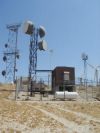Rent | Billing/ Late Payments | Easements | Assignments | Renewals | Amendments
Rent
back to top
_______________________________________________________________________________________________________
Billing/Late Payments
back to top
_______________________________________________________________________________________________________
Easements
back to top
_______________________________________________________________________________________________________

When a right-of-way grant holder ( Assignor ) wishes to transfer their interest in their grant to another party ( Assignee ), the transfer process is called an assignment .
What the Assignor and Assignee Do
The proposed Assignee must apply to BLM to assign a right-of-way grant using a form SF-299 (see the SF-299 link at the Forms page). The proposed Assignee fills out questions 1-6, 12, and 19 (hazmat statement). In addition, the holder (Assignor) must sign a document agreeing to the assignment, and the proposed assignee must sign a statement agreeing to be bound by the terms and conditions of the grant.
What BLM Does
Under the new regulations, BLM completes a Processing Category Determination form for each assignment application. Whether the application is for one or twenty assignments, BLM estimates the amount of work hours needed to process the assignment package, and uses the estimated work hours to determine the appropriate Processing Category. The authorized officer then issues the Processing Category Determination as a Decision to the applicant requesting the appropriate processing fee.
New Regulations
The new regulations clarify that the terms and conditions can be changed when a grant is assigned. Where there are changes to the terms and conditions of an assigned grant, BLM will issue a new grant to the assignee. Otherwise, BLM can assign grants with a Decision letter. In addition, the new regulations clarify that BLM can institute or modify bonding requirements on the new holder if appropriate.
A Monitoring Category Determination and Decision is generally not required if BLM does not change the terms and conditions of the authorization being assigned. However, due to special stipulations that may be contained in a right-of-way grant, the need for a monitoring Decision should be reviewed on a case-by-case basis.
back to top
_______________________________________________________________________________________________________
 Renewals
Renewals
For right-of-way grants issued under the Mineral Leasing Act (MLA) since November 16, 1973, and those grants under the Federal Land Policy and Management Act (FLPMA) that specify they are renewable, BLM will renew the grant if the holder is in compliance with the terms and conditions of the grant. The new regulations specify that the holder must apply to BLM to renew the grant at least 120 days prior to expiration. The holder must apply for a renewal using form SF-299 (see the Forms page).
Unspecified Renewable Grants
If a right-of-way grant does not specify that it is renewable, the holder may still request that it be renewed. However, BLM is under no obligation to do so. The application must be made at least 120 days prior to expiration in the same format described above. The applicant must show that they are in compliance with the terms and conditions of the authorization.
New Regulations
Under the new regulations, BLM completes a Processing Category Determination form for each renewal request. A renewal request may require additional environmental review, so BLM must ensure that all processing time is taken into account. BLM estimates the amount of BLM/Federal work hours needed to process the renewal request, and uses the estimated work hours to determine the appropriate Processing Category. The authorized officer then issues the Processing Category Determination as a Decision to the applicant requesting the appropriate processing fee.
The new regulations clarify that BLM has the authority to change the terms and conditions of the grant upon renewal, so BLM completes a Monitoring Category Determination for each renewal request that involves changing the terms and conditions of the grant. A Monitoring Category Determination is generally not required if BLM does not change the terms and conditions of the authorization being renewed. However, due to special stipulations that may be contained in a right-of-way grant, the need for a Monitoring Category Determination and Decision should be reviewed on a case-by-case basis.
Unrenewable Authorizations
It is important to note that BLM does not renew 1) pre-FLPMA right-of-way authorizations, or 2) MLA authorizations that were issued prior to November 16, 1973 (see note below). If the holder would like to continue a use authorized prior to that date, the holder must apply for a new MLA authorization or an authorization under FLPMA. The application for a new MLA grant, or conversion of a pre-FLPMA to a FLPMA authorization, must be made at least 120 days prior to the expiration of the existing authorization.
Special Note for MLA Renewals
Right-of-way grants issued prior to November 16, 1973 under the Mineral Leasing Act did not contain a maximum 30-year term or other current provisions for width, common carrier, cost recovery, etc. An application for the renewal of an MLA right-of-way grant issued prior to November 16, 1973, should be treated as a request for a new grant under the MLA in order to bring the grant under the terms of the law as it was revised in 1973.
back to top
_______________________________________________________________________________________________________

Amendments
An amendment is required any time there is a substantial deviation in use or location of a right-of-way application or grant. Substantial deviation means a change in the location or use which requires: (1) construction or use outside the proposed or authorized boundaries of the right-of-way, or (2) any change from, or modification of, the proposed or authorized use (such as adding equipment, overhead or underground lines, pipelines, structures, or other facilities not included in the original application or grant).
What the Applicant or Holder Must Do
The applicant/holder should contact BLM to discuss their proposed change in use or location. If BLM determines that there is a substantial deviation from the existing application or grant, the applicant/holder must amend their application or seek an amendment of their grant using an SF-299 application. The requirements to amend an application or a grant are the same as those for a new application, including paying processing and monitoring fees and rent.
What BLM Does
Under the new regulations, BLM will complete a Processing Category Determination Form based on the estimated number of work hours needed to process the amendment. BLM then issues the Processing Category Determination Decision and requests the appropriate processing fees. Note that the Customer Service Standard (43 CFR 2804.25) applies when processing amendments. If an application to amend a grant is approved, BLM completes a Monitoring Category Determination Form based on the estimated number of work hours needed to monitor construction and operation of the amendment, then issues a Monitoring Category Decision to the holder. BLM may also change the terms and conditions of the grant or require bonding of the holder.
Amendments to Pre-FLPMA Grants
If a ROW grant administered under 43 CFR 2800 was issued prior to October 21, 1976, and there is a proposed substantial deviation in the location or use or terms and conditions of the grant, the holder must apply for a new grant. If the application is approved, BLM may either 1) terminate the old grant and issue a new grant under the new regulations, or 2) keep the old grant in effect and issue a new grant for the new use or location or terms and conditions. See 43 CFR 2807.20(d) for details.
Amendments to MLA Grants
Right-of-way grants issued prior to November 16, 1973 under the Mineral Leasing Act did not contain a maximum 30-year term or other current provisions for width, common carrier, cost recovery, etc. An application to amend an MLA right-of-way grant issued prior to November 16, 1973, should be treated as a request for a new grant under the MLA in order to bring the grant under the terms of the law as it was revised in 1973 (43 CFR 2887.10(d, e).
Amendments to Railroad Grants
Under the new regulations, there are specific requirements for applications to realign railbeds and related communication facilities. Refer to 43 CFR 2807.20(e) for more specific direction.
back to top







 Grant Administration provides information for the phase-in of the rent payment options, late payment fees, and right-of-way assignments, renewals and amendments.
Grant Administration provides information for the phase-in of the rent payment options, late payment fees, and right-of-way assignments, renewals and amendments.
 Renewals
Renewals 